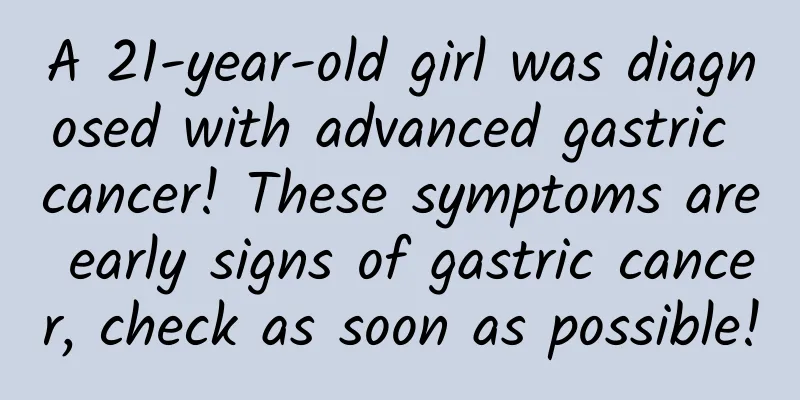Is my child's spine curved? - 10 questions and answers about adolescent scoliosis

|
Author: Wang Chen, The Second Affiliated Hospital of Naval Medical University Reviewer: Chen Huajiang, Chief Physician, Second Affiliated Hospital of Naval Medical University Many parents often come to the clinic with worried faces to consult: "Doctor, the school physical examination suspected that my child has scoliosis, please take a look!" "Doctor, so-and-so's child has scoliosis, we are worried, and want to check our child." ... and so on. Many children were found to have no scoliosis after examination, and it was just a false alarm. In fact, we can do a preliminary screening and judgment at home to determine whether there is scoliosis, without having to go to the hospital for peace of mind. Let's take a brief look at it through a few questions. 1. What is scoliosis? Scoliosis is a lateral curvature of the spine (Cobb angle > 10°) with associated rotation. This structural change can occur in a variety of situations. Curvature that develops during rapid growth can cause significant deformity and may be associated with impaired cardiopulmonary function. Adolescent idiopathic scoliosis is the most common type. Figure 1 Copyright image, no permission to reprint 2. Why do teenagers suffer from scoliosis? In fact, the cause of adolescent scoliosis is still not very clear. Studies have shown that genetic factors are one of the causes of adolescent scoliosis, but the author has treated a pair of identical twins, one of whom had a large angle of scoliosis, while the other was completely normal. Other scholars have proposed factors such as abnormal growth hormone secretion, abnormal connective tissue structure, abnormal paraspinal muscle tissue, abnormal vestibular function (affecting axial posture), abnormal melatonin secretion (affecting growth), and abnormal platelet microstructure (whose contraction system is similar to skeletal muscle), but none of them have been confirmed. 3. What are the symptoms of scoliosis? Most patients with scoliosis do not have any special discomfort symptoms in the early stages. Usually, trunk asymmetry is noticed by others inadvertently or discovered during scoliosis screening at school, or trunk asymmetry is discovered accidentally during physical examinations or imaging examinations such as chest X-rays. 4. How to do a preliminary examination at home? 1. The most intuitive inspection is to look : ask boys to take off their shirts and girls to wear only underwear, fully expose their backs, put their legs together, and let their hands hang naturally on both sides of the body. When parents observe their children from behind, if there is scoliosis, they may have the following manifestations: (1) Spinal curvature with thoracic or lumbar asymmetry. (2) The shoulders or shoulder blades are not of the same height. (3) The waistline is asymmetrical. (4) When the arms hang naturally, the distance between them and the torso is asymmetrical. (5) The head is tilted to one side and not centered over the sacrum, sometimes called “trunk deviation.” If there is no trunk deviation, a plumb line through the spinous process of the seventh cervical vertebra should pass through the gluteal groove. Figure 2 Copyright image, no permission to reprint 2. Do a forward flexion test : If no obvious abnormalities mentioned above are found when observing from the back, you can also let the child bend 90° and do a forward flexion test. The specific method is: the child puts his feet together, straightens his knees, lets his arms hang naturally, bends forward until his spine is parallel to the horizontal plane, and then the parents observe the child from behind. If one side of the chest (ribs) or waist bulges, it is a sign of scoliosis. Figure 3 Copyright image, no permission to reprint 5. What should I do if I find that my child has scoliosis? If the child is suspected of scoliosis after the above examinations, he/she needs to go to the hospital for further examination to evaluate the degree of scoliosis in detail. Usually, it is necessary to take an anteroposterior and lateral X-ray of the entire spine to help with the evaluation. 6. If a child has mild scoliosis, what conditions may cause the scoliosis to worsen? No one can predict with absolute accuracy which curves will progress and which will not. Some studies suggest that the following factors may contribute to the progression of a curve: 1. Children under 12 years old. 2. Girl. 3. Girls before menarche. 4. The initial Cobb angle of scoliosis is ≥20°, regardless of age. 5. There are two curvatures in the spine at the same time or a single curvature of the thoracic vertebra. 6. Adolescents whose bones are still in the early stages of development. 7. How to treat scoliosis? Depending on the severity of the scoliosis and the child's growth and development potential, the main treatments include observation, brace therapy and surgical treatment. Some medical centers offer exercise therapy for scoliosis (such as Schroth exercises) as an adjunct to observation or bracing, but there are no high-quality studies to prove the effectiveness of these exercise adjuncts. 1. Observation : Observation is recommended for adolescent scoliosis patients with a Cobb angle of less than 20°; observation is also an option for those with a Cobb angle of 20° to 40°. Children under observation need regular clinical and/or imaging follow-up until skeletal maturity or scoliosis develops to the point where bracing or surgery is required. 2. Bracing treatment Indications : In skeletally immature adolescent patients with scoliosis, bracing can reduce the risk of the curve progressing to ≥50° (the conventional surgical threshold) at skeletal maturity. The effect of bracing is directly related to the length of time the brace is worn daily. Contraindications : ① The remaining growth potential is extremely small or the bones are mature; ② The Cobb angle is ≥50°; ③ The Cobb angle is <20°. 8. How long should the brace be worn every day? In the past, it was recommended to wear a brace for 23 hours a day. However, studies have shown that the treatment success rate is 93% when the average daily brace is worn ≥12.9 hours. However, for children with low skeletal maturity, the brace wearing time may need to be extended. 9. Can children still attend physical education classes after wearing a brace? Of course you can! You can do many sports while wearing the brace, and you can remove the brace for sports that you cannot do with the brace (such as swimming and gymnastics). 10. Under what circumstances is surgical treatment required? When scoliosis progresses to the following criteria, surgical correction may be necessary: 1. Skeletal immaturity with Cobb angle ≥50°. 2. Some skeletally immature patients with Cobb angles of 40° to 50°. 3. Skeletically mature patients with a Cobb angle ≥50° can also choose surgery to correct the deformity. 4. Patients with lumbar scoliosis and significant trunk deviation may also require surgical correction. |
<<: "Because my teeth are too yellow, I dare not smile with my teeth showing when taking photos..."
>>: Glucose tolerance test explained in one article
Recommend
What causes fallopian tube enlargement?
Nowadays, female infertility is a very common dis...
What is the cause of vaginal bleeding?
Many women experience vaginal bleeding frequently...
Female upper body hot lower body cold
The condition of upper body heat and lower body c...
Can white vinegar make breasts bigger?
Due to genetic reasons, the breast size of each w...
Can pregnant women drink Songhua calcium milk powder?
Songhua calcium milk powder is a kind of milk pow...
Is high estrogen normal in pregnant women?
Pregnancy is a major event in a woman's life....
How to choose good Tremella? Nutritional comparison between bird's nest and Tremella
Tremella is also known as white fungus, snow fung...
What does it feel like to have a female genitalia?
The condition of genital warts is relatively comp...
What are the benefits of chrysanthemum brain? What are the effects and functions of chrysanthemum brain?
Try not to give chrysanthemum tea to children, be...
What causes frequent urination in women?
For the human body, normal physiological metaboli...
Is it good to eat ginger during menstruation?
Eating ginger during menstruation is not likely t...
What should women do if they can't sleep at night?
Many women are also under great pressure, especia...
Eating spicy food is a form of benign masochism! What happened to those who love spicy food?
Recently, there was a topic on Xiaohongshu #Eatin...
After reading this, all those who misunderstood psoriasis were silenced!
Now is the transition season between autumn and w...
What is the cause of vaginal bleeding in women?
We know that women usually experience vaginal ble...









